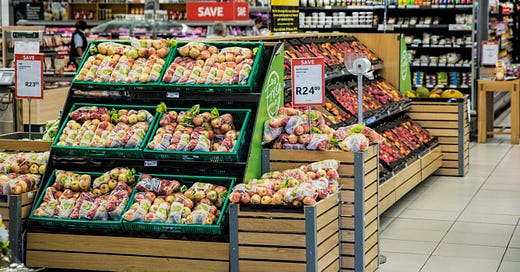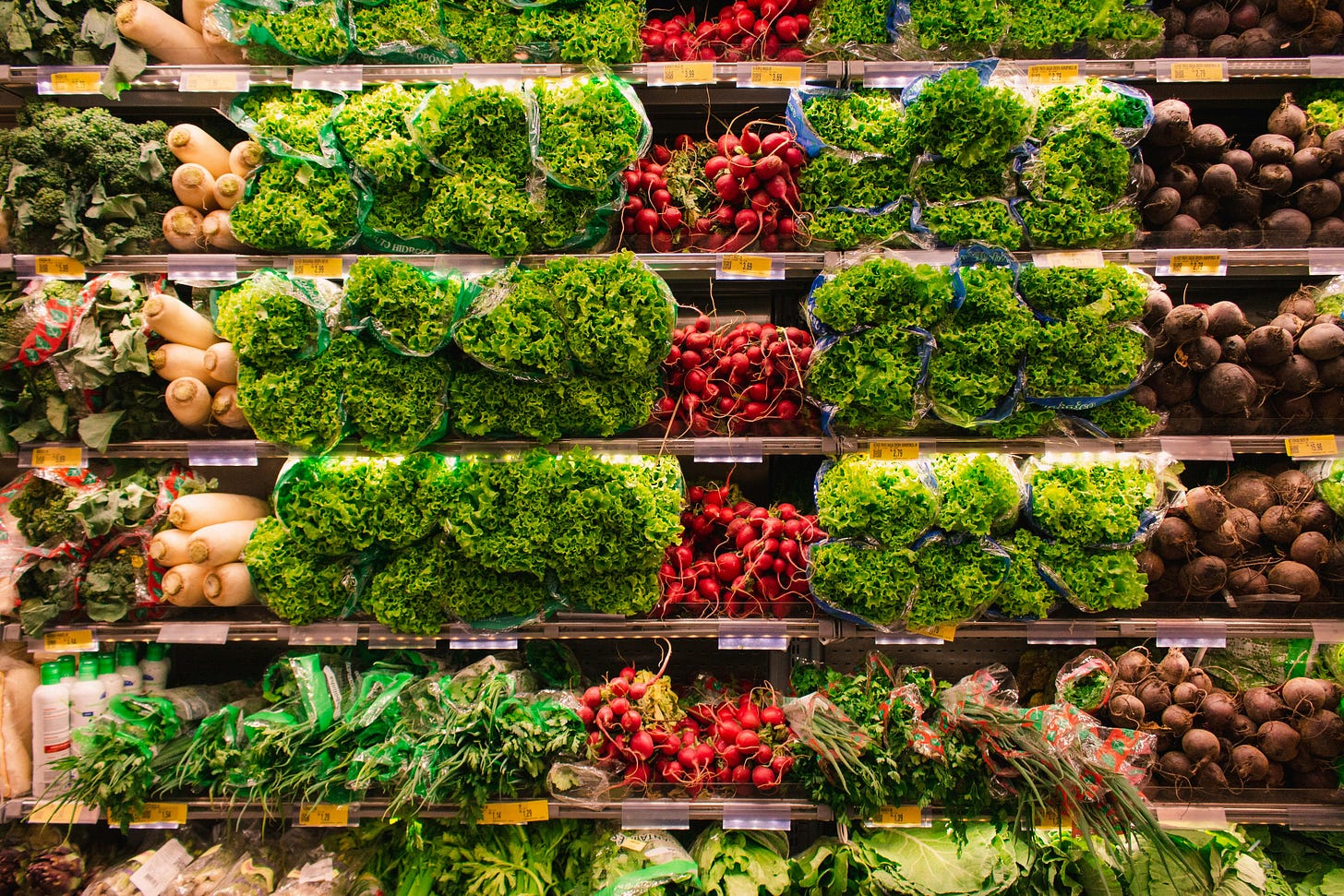Hey folks, welcome to my first attempt at an audio version of the Health Square. In this episode I’ll be talking about the concept and practice of “Perimeter Grocery Shopping.” I learned about perimeter grocery shopping a few years ago, and even though it’s not a new concept, it’s been a crucial tool for making healthy dietary choices. It can be incredibly difficult to walk through the grocery store and avoid grabbing a bag of cookies, or a box of sugary cereal, and even harder to pick out a few heads of broccoli instead. Perimeter shopping is a fairly simple practice that quite literally, puts you on a direct path to the healthy foods while you mostly avoid going anywhere near the junk food. Let’s dive into it.
Imagine for a moment that you’ve just walked into your local grocery store. Which way is the produce section or the fresh fruits and vegetables? Chances are, it’s either immediately to the left or right of the checkout lanes. Believe it or not, almost all grocery stores are structured this way, and this is the beginning of perimeter shopping.
In simple terms, perimeter shopping means that nearly all of the healthiest foods in the grocery store are found along the outside perimeter of the store, not in the aisles. There are a few exceptions but I’ll get into that later. Step one of perimeter shopping is always head to the produce section first and grab your fruits, vegetables, and other whole foods.
From there, stick to the outside wall of the store and head to the butcher or seafood section. If you’re vegan or vegetarian, chances are you’re already halfway done with your grocery shopping and can move on. Depending on the grocery store, you may pass the dairy or deli section along the way. This is a good opportunity to grab some healthy dairy products like Greek yogurt, cottage cheese (if you’re so brave) or eggs - which technically aren’t dairy products but they’re in the dairy section because eggs and milk are basically the same color. Personally I avoid dairy products with a lot of added sugars but vanilla Greek yogurt is a better alternative to say, a quart of ice cream.
From here, most of your perimeter grocery shopping is already complete. You’ve gotten your fruits and vegetables, meat and dairy, and have hopefully have filled your shopping cart with a variety of nutritious foods. But unless you’re on a strict paleo-like diet (which I don’t recommend), you probably still need to grab some other things.
This is where the real challenge comes into play, but I’ll walk you through my process of venturing into the aisles in case its helpful.
Most of the food I grab in the aisles are dried fruit, peanut butter, beans, rice and other grains, and nuts. Unfortunately some of these foods are in the same section as their less healthy counterparts so I find it helps to know what I’m looking for before aimlessly wandering into the snack aisle and walking out with a bag of Peanut M&Ms instead of some low-sodium cashews. Be specific - instead of thinking, “I’m gonna go get some pasta” set the intention, “I’m going to get two boxes of Organic angel hair pasta.” This way, Chef Boyardee is less likely to wind up in your pantry. I’ll elaborate more on having a list later, but the point for now is: figure out what you need first, get it, and go check out. The less time you spend wandering the aisles the better.
There are a few more tips and aspects of Perimeter shopping I’ll mention in a moment, but that’s the gist of it. Simply put, if you want to make it easier to stock up on healthy groceries, stick to the perimeter. Avoid the aisles unless absolutely necessary.
If you’re still listening, here are a few final tips and thoughts:
It really helps to make a list before you go in the store. Whether it’s hand-written or a note on your phone, make a list of everything you need first. Commit to only getting what’s on your list. The whole foundation of this practice is decreasing the likelihood that you opt for unhealthy foods and having a clear intention from the get-go is super helpful.
I’m not saying you should never buy unhealthy foods. If you like potato chips and can effectively manage your snacking habits, go for it. But my intention here is to help those of us who struggle to resist the urge to bring home junk food, and then eat that junk food without moderation. At the end of the day, you have to know your own limitations.
Perimeter shopping applies to nearly every grocery store in America. Wholesale clubs like Costco are set up somewhat differently, but your average grocery store almost always situates the produce, meat and seafood, and dairy along the outside perimeter of the store. This practice is pretty much universal.
And lastly, eggs are not dairy products and I don’t know why they’re in the dairy section. Some eggs are brown and milk is not brown unless it’s chocolate milk. Some eggs are blue and now that I’m thinking about it, eggs can be any color depending on how well you paint the chicken.
Thanks for listening, and stay healthy.







Share this post